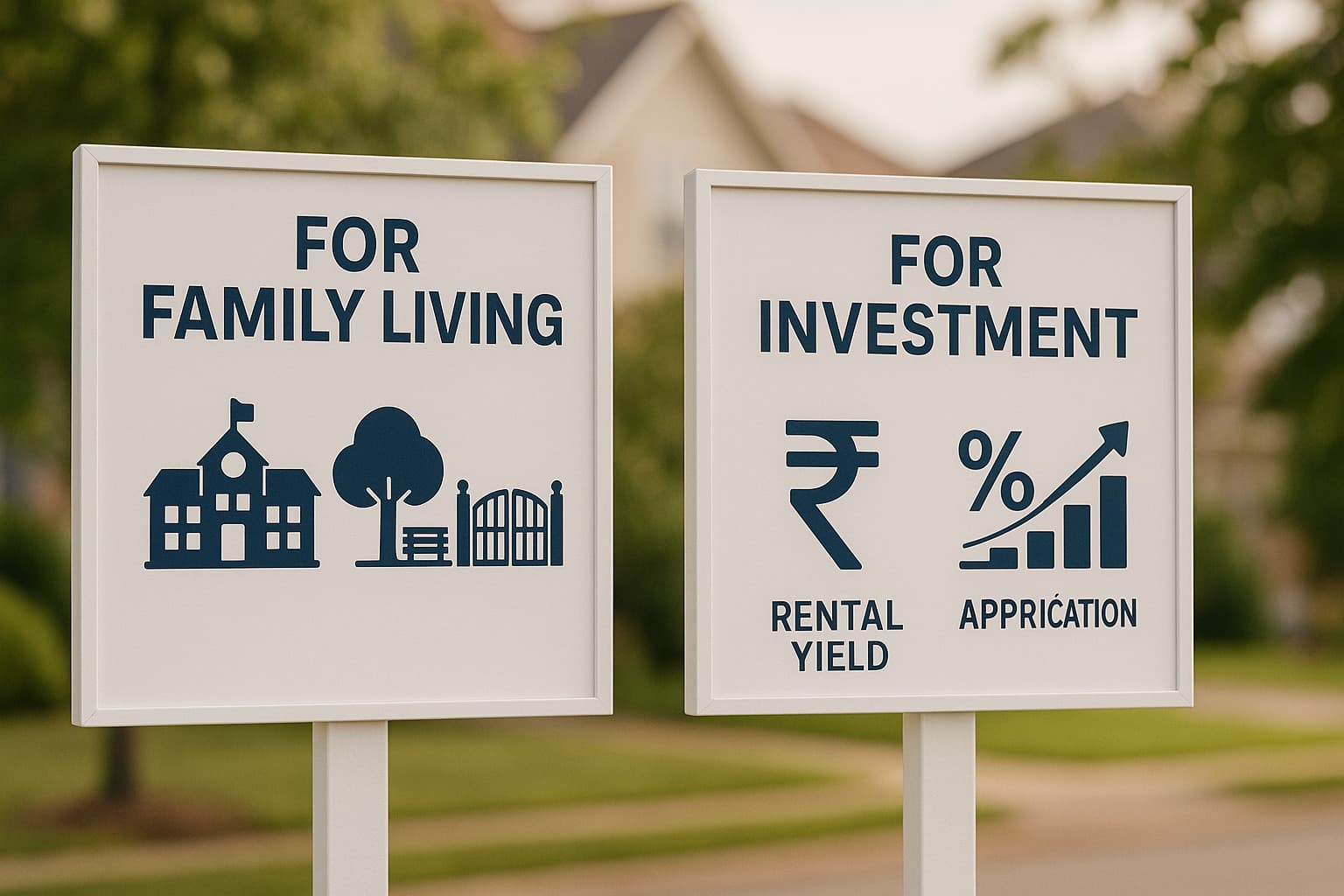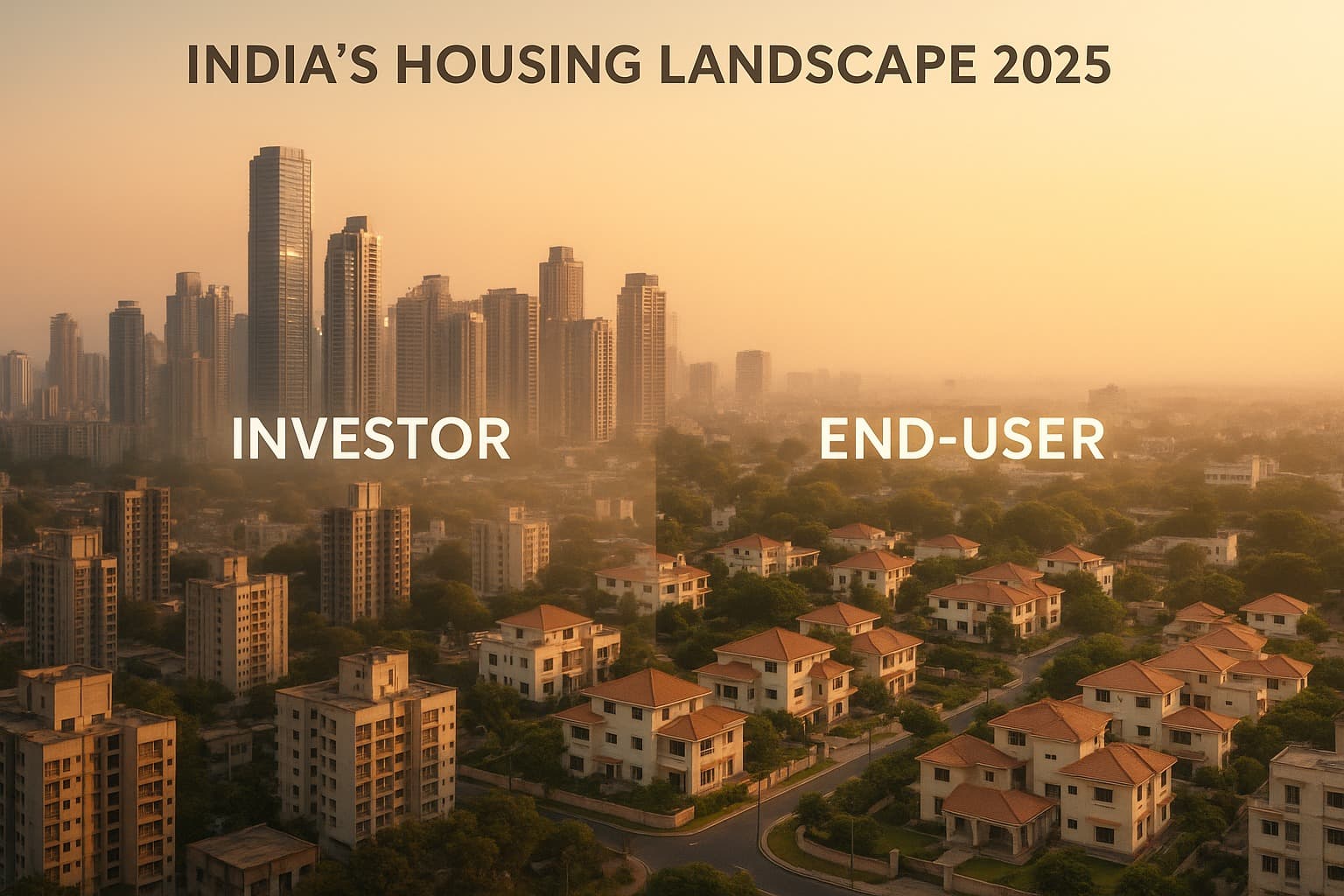End-User Driven vs. Investor Driven Real Estate Markets in India
Summary
Indian real estate is driven by end-users (stable, quality) or investors (high returns, volatile). Understanding these distinct markets, their trends in 2025, and segmentation is crucial for informed property decisions.

End-User Driven vs Investor Driven Markets
The Indian real estate market is a complex ecosystem shaped by two key forces: those who buy to live and those who buy to invest. Understanding end-user real estate versus investor real estate is critical for anyone navigating property decisions today. With rapid urbanisation, rising incomes, and changing lifestyle preferences, property buyers India now fall into distinct categories, influencing real estate demand types and housing market trends in major metros and emerging cities alike.
What Are End-User Driven Markets?
End-user driven markets are those where the majority of property purchases are made by people who intend to live in the property themselves. These buyers prioritize location, amenities, and lifestyle over short-term profits. Impact of end-user demand on Indian housing market is significant because it creates stable, sustained growth. Developers in these areas focus on quality construction, well-planned layouts, and long-term community development.
Cities with strong employment opportunities, good schools, and healthcare facilities tend to be more end-user oriented. Which cities in India are more end-user driven in real estate often includes IT and industrial hubs like Bangalore, Pune, and Chandigarh, where families and professionals are looking for homes rather than speculative investments.
What Are Investor Driven Markets?
In contrast, investor-driven markets are dominated by buyers seeking capital appreciation and rental yields rather than immediate habitation. Investor-driven property trends in metro cities like Mumbai, Gurgaon, and Noida often reflect speculative purchases, where high-demand, high-growth zones attract attention for potential ROI.
In these markets, developers may focus on launching numerous projects quickly to capitalize on real estate investment vs end-user purchase trends in 2025, sometimes prioritizing quantity over lifestyle quality. Pricing, connectivity, and short-term rental potential become major considerations for investors rather than community planning or long-term livability.
Key Differences Between End-User and Investor Driven Markets
Understanding the difference between end-user and investor-driven markets can help buyers make informed decisions.

These distinctions impact Indian real estate buyer trends 2025, with end-user demand creating steady, long-term growth, while investor activity often causes price fluctuations and sudden market spikes.
End-User Housing Demand vs Investor Speculation
End-user housing demand vs investor speculation is a critical metric for gauging market health. When a market is dominated by end-users, the demand is consistent, and developers can plan projects with quality, sustainability, and community in mind. Investors, on the other hand, often enter markets where prices are rising rapidly, hoping for short-term gains. While this can drive rapid growth in property values, it can also lead to oversupply if speculative interest drops suddenly.
For example, cities like Bangalore and Pune have traditionally been end-user driven, with families looking for homes near workplaces and schools. Meanwhile, Noida and Gurgaon have seen investor-driven booms in certain sectors, leading to rapid price appreciation but sometimes slower absorption rates.
How End-User Driven Markets Differ from Investor-Driven in India
How end-user driven markets differ from investor-driven in India is not just about who buys the property; it’s about the sustainability of growth and quality of urban living. End-user markets encourage:
Thoughtful urban planning Higher demand for quality amenities Long-term neighborhood stability
Investor-driven markets, by contrast, prioritize:
Quick turnaround projects Maximum financial returns High-density developments
Understanding this difference helps property buyers India choose the right market segment for their needs, whether they are looking for a home or an investment.
Segmentation of the Indian Real Estate Market
Real estate market segmentation India is increasingly influenced by these buyer types. Developers often segment projects based on anticipated demand:
End-User Focused Projects: Apartments, villas, and gated communities designed for families and professionals. Investor-Focused Projects: High-rise apartments, commercial spaces, and short-term rental options.
This segmentation affects housing market trends and pricing strategies across metros and tier-2 cities. Investors must understand that while high returns are possible, the risk of market volatility is also higher in investor-driven areas.

Trends in 2025
Looking ahead, Indian real estate buyer trends 2025 suggest a growing balance between end-user and investor activity. Emerging tier-2 cities are increasingly end-user oriented, as young professionals and families migrate for employment opportunities. At the same time, metro cities continue to attract investors seeking capital appreciation, especially in high-demand micro-markets.
Real estate investment vs end-user purchase trends in 2025 will likely see developers launching projects that appeal to both segments—offering amenities for families while also providing attractive returns for investors. This hybrid approach ensures market stability and sustainable growth.
Choosing the Right Market
For property buyers India, understanding whether a market is end-user driven or investor driven is key. Families seeking long-term stability, schools, and community amenities should focus on end-user markets. Those looking for high returns and short-term appreciation may prefer investor-driven micro-markets in metros.
Investors and homebuyers alike must track housing market trends, demographic changes, and infrastructure developments to identify opportunities aligned with their objectives. In essence, choosing the right market segment can significantly affect both financial returns and lifestyle satisfaction.
Conclusion
The distinction between end-user real estate and investor real estate is more than academic—it shapes the Indian housing landscape, influences real estate demand types, and drives housing market trends. End-user markets provide stability, quality, and long-term growth, while investor-driven markets deliver high returns but higher volatility. As Indian real estate buyer trends 2025 evolve, developers are increasingly segmenting projects to cater to both segments, creating a balanced ecosystem. Understanding how end-user driven markets differ from investor-driven in India helps buyers and investors make informed decisions that maximize both lifestyle and investment potential.
Summary (100 words)
India’s real estate market is shaped by end-user real estate and investor real estate. End-user markets prioritize lifestyle, amenities, and long-term community growth, creating stable housing market trends. Investor-driven markets focus on capital appreciation and rental yields, leading to rapid but volatile price changes. Indian real estate buyer trends 2025 indicate that metro cities often see investor-driven activity, while tier-2 cities lean towards end-user demand. Understanding end-user housing demand vs investor speculation and real estate investment vs end-user purchase trends in 2025 is crucial for property buyers India, enabling informed decisions and sustainable growth in both residential and commercial segments
